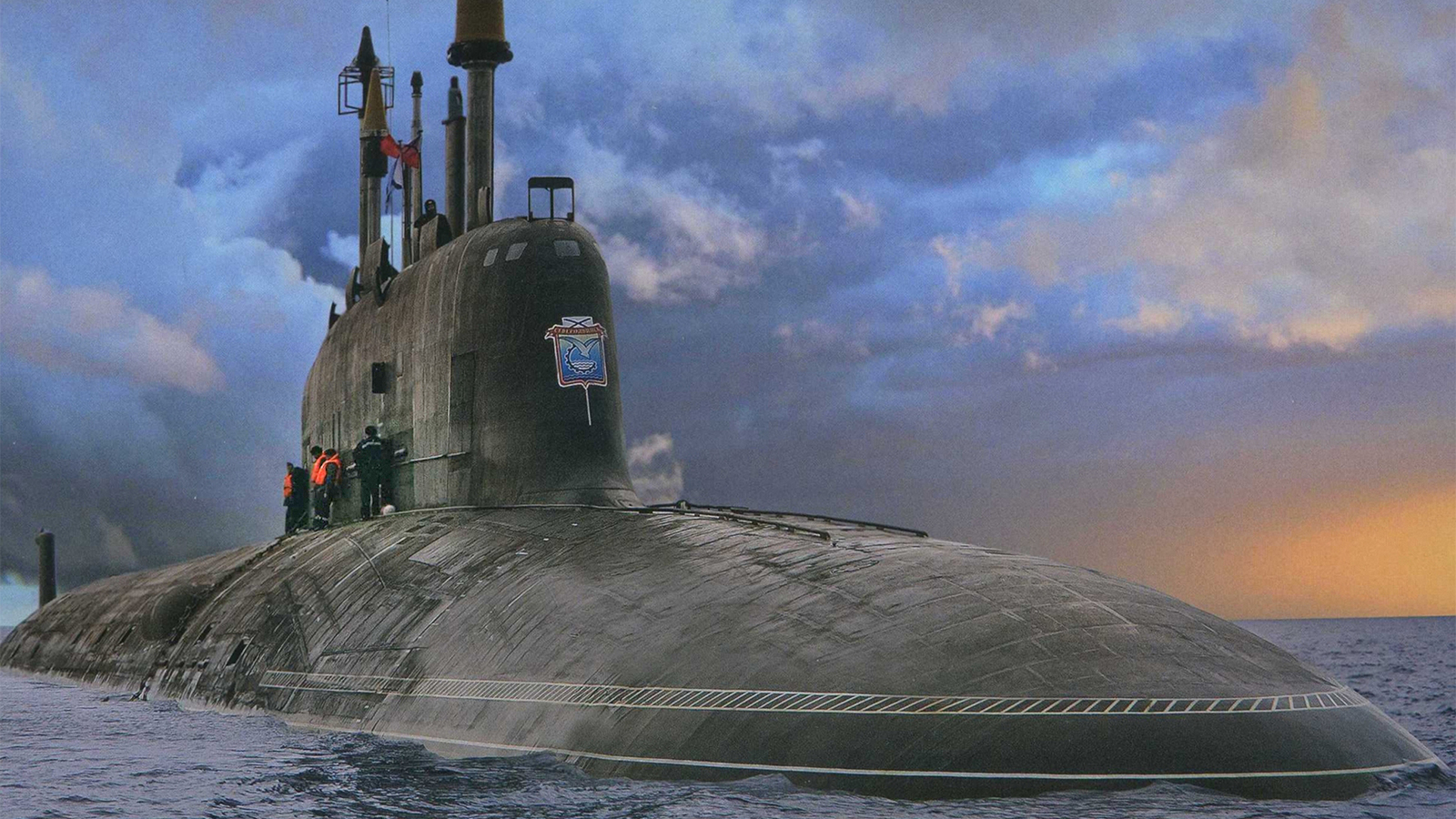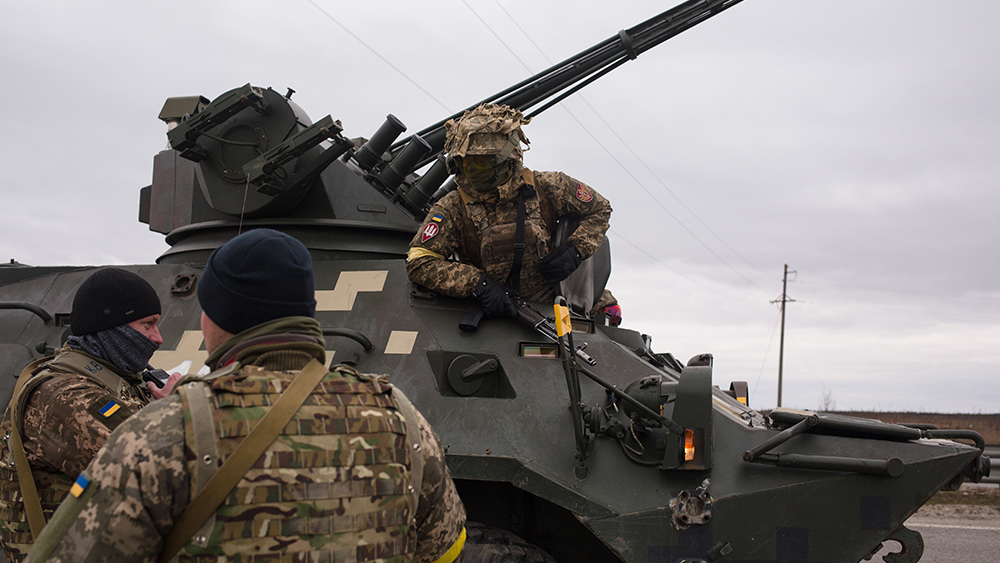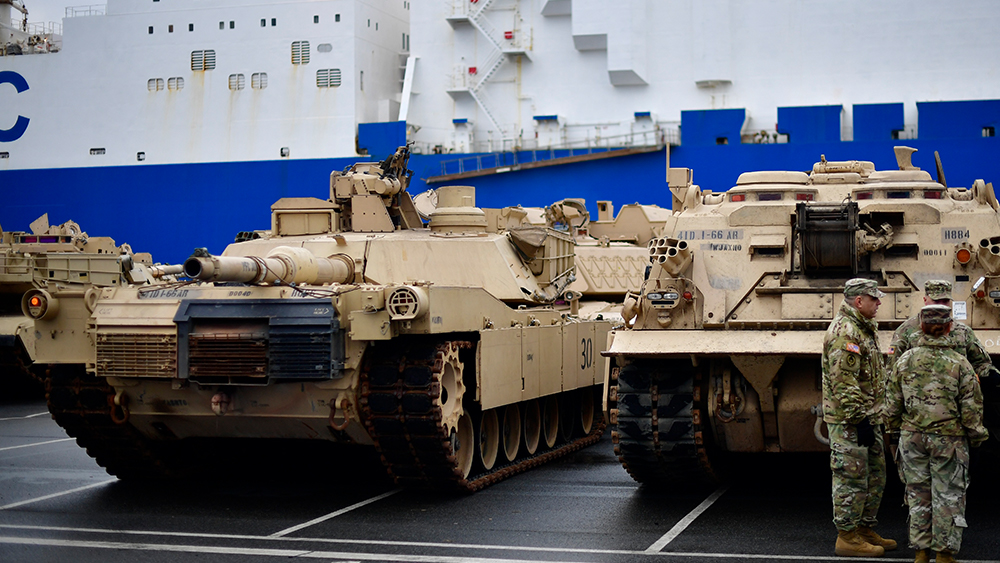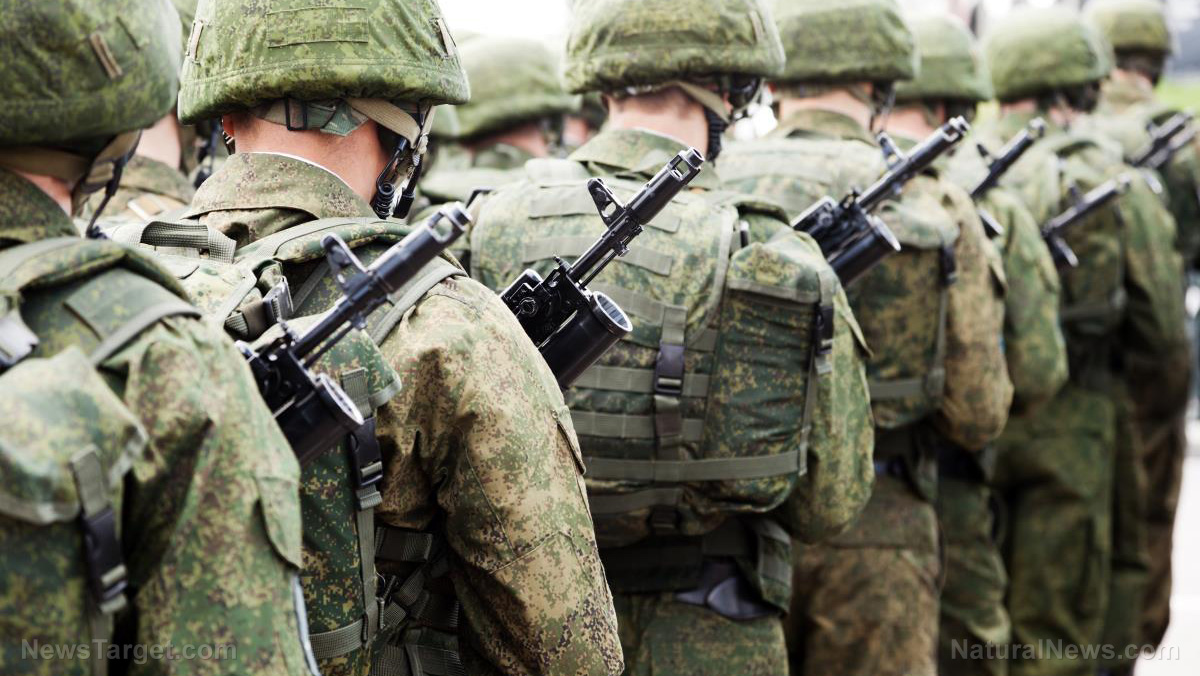Friendly fire? Ukrainian F-16 pilot killed during combat mission – allegedly by U.S.-supplied Patriot missile batteries
04/16/2025 / By Belle Carter
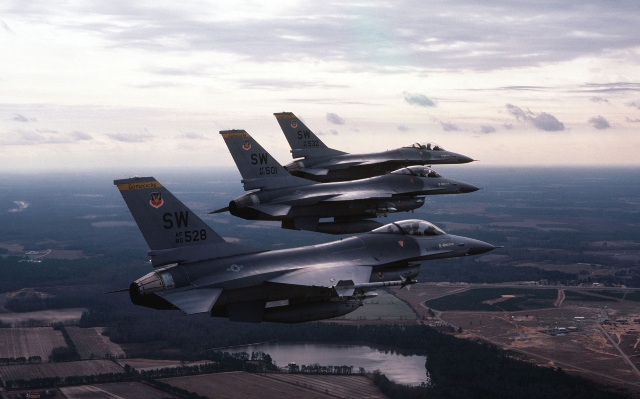
- Captain Pavlo Ivanov, a Ukrainian F-16 pilot, was killed on April 12 during a combat mission, marking the second confirmed F-16 loss in the war.
- Zelensky called for an investigation while Russian media and analysts suggested friendly fire, mirroring unresolved ambiguities from an August 2024 incident that also killed a pilot.
- The crashes highlight critical flaws in Ukraine’s defense systems, including the lack of Link 16 technology on Patriot batteries, which prevents real-time coordination with F-16s, exacerbating the risk of friendly fire during combat.
- Ukrainian officials estimate nearly half of air losses stem from friendly fire, driven by outdated communication systems, mixed Western donations and strained logistics, while analysts warn this could jeopardize future Western arms shipments.
- Ongoing incidents pressure Kyiv to address coordination failures and interoperability, while Washington weighs risks in further aid deliveries, underscoring that advanced weaponry alone cannot overcome human and technical missteps in complex battlefield conditions.
A Ukrainian F-16 pilot, 26-year-old Captain Pavlo Ivanov, was killed when his fighter jet crashed during a combat mission near the eastern front on April 12, marking the second confirmed loss of an F-16 in the war and reigniting questions about its operational vulnerabilities.
Ukraine’s military has launched an investigation into the downing, which occurred as Russian forces continued missile strikes. While President Volodymyr Zelensky vowed retaliation, conflicting details emerged over whether the plane was truly shot down by Russian surface-to-air missiles or friendly fire, a possibility underscored by a similar incident in August 2024, which also claimed a Ukrainian pilot’s life.
Ukraine’s military and government issued conflicting accounts of the crash. The Air Force praised Ivanov’s “bravery” in a Telegram statement but offered few specifics, instead noting the “extremely complicated conditions” of combat. Zelensky confirmed the death later that day, emphasizing the need to “investigate all circumstances,” setting the stage for speculation about whether Russian weapons or technical flaws were to blame.
The incident follows a month of warnings from senior officials like Air Force spokesperson Yuri Ignat, who expressed concern over the limitations of Ukraine’s F-16s, describing them as ill-equipped to challenge Russia’s advanced Su-35 jets without additional support.
“We need a comprehensive approach,” Ignat said, citing deficiencies in electronic warfare and air defense coordination.
Russian state media and military analysts pointed fingers at Kyiv’s forces, with outlets like RT suggesting Ukraine’s delayed probe proves friendly fire is suspected. Meanwhile, Zelensky’s mention of a “strong and precise response” implied a belief that Russia was responsible, though such ambiguity has fueled public frustration about transparency.
A repeat of last year’s tragedy
The loss mirrors the August 2024 downing of pilot Oleksii “Moonfish” Mes, Ukraine’s first F-16 casualty. Neither incident has been officially resolved, but multiple reports, including a Wall Street Journal investigation, attributed the earlier crash to Ukraine’s Patriot missile batteries shooting down Mes’ jet – possibly due to a lack of secure communications alongside the advanced U.S.-supplied systems. (Related: Ukrainian military shoots down its own F-16 fighter jet provided by U.S. earlier this year.)
The parallels have raised alarms about systemic vulnerabilities. “This repeats the August incident,” warned Dariia Kaleniuk, co-founder of Kyiv’s International Center for Ukrainian Victory, citing the absence of Link 16 – a tactical data system critical for identifying friendly aircraft. U.S.-delivered Patriot systems initially lacked this technology because planners did not anticipate F-16 deployments, creating an intelligence gap that impaired coordination.
Ukraine’s F-16s lack Link 16 compatibility, a flaw perpetuated despite early warnings. “The Pa[triots] were never upgraded with Link 16 after the F-16s arrived,” Kaleniuk explained. This oversight has left pilots at higher risk during chaotic aerial battles, where Patriot operators might mistakenly target friendly craft.
The gap has broader consequences. Over one-third of Ukraine’s air defenses now operate without integrated systems, compounding issues for a military already battling Russia’s numerical superiority. Analysts note this further strains an air force already losing aircraft to other dangers, including maintenance challenges and pilot fatigue.
Ukrainian lawmaker Maryana Bezuglaya recently claimed “about half” of Kyiv’s warplane losses stem from friendly fire, a stark revelation underscoring systemic problems.
“We’re losing ourselves too much,” she wrote on Telegram, referencing incidents involving MiG-29s and helicopters mistakenly shot down by allies.
Both sides face similar risks; Russia has suffered its own friendly fire casualties, with Insider.ru reporting 13 aircraft losses due to its air defenses. Yet Ukraine’s struggles are heightened by reliance on mixed Western donations and dilapidated supply chains, complicating training and coordination.
The incidents have sparked debates over Western military aid. Critics argue additional grounding of advanced jets like F-16s could pressure donors to reevaluate support, especially if technical gaps persist.
“Equipment alone isn’t enough,” said Ignat, calling for investments in training and interoperability systems like Link 16.
Zelensky, meanwhile, defended U.S. support, citing recent “good results” from F-16s intercepting Russian missiles. Still, the crashes highlight systemic risks – ones Washington’s new administration may weigh carefully as it debates further arms supplies.
Watch the video below where Trump announces Boeing’s plan to build new 6th-generation fighter jets.
This video is from Cynthia’s Pursuit of Truth channel on Brighteon.com.
More related stories:
Russian military DESTROYS 9 Ukrainian jets in one day.
Russian defense firm predicts SWIFT DESTRUCTION of Ukraine’s new French fighter jets.
Sources include:
Submit a correction >>
Tagged Under:
chaos, F-16, friendly fire, Link 16, military technology, national security, Oleksii "Moonfish" Mes, Pavlo Ivanov, Russia, Ukraine, Ukraine war, US-supplied weapons, violence, Volodymyr Zelensky, weapons technology, WWIII
This article may contain statements that reflect the opinion of the author
RECENT NEWS & ARTICLES
COPYRIGHT © 2018 MILITARYTECH.NEWS
All content posted on this site is protected under Free Speech. MilitaryTech.news is not responsible for content written by contributing authors. The information on this site is provided for educational and entertainment purposes only. It is not intended as a substitute for professional advice of any kind. MilitaryTech.news assumes no responsibility for the use or misuse of this material. All trademarks, registered trademarks and service marks mentioned on this site are the property of their respective owners.





